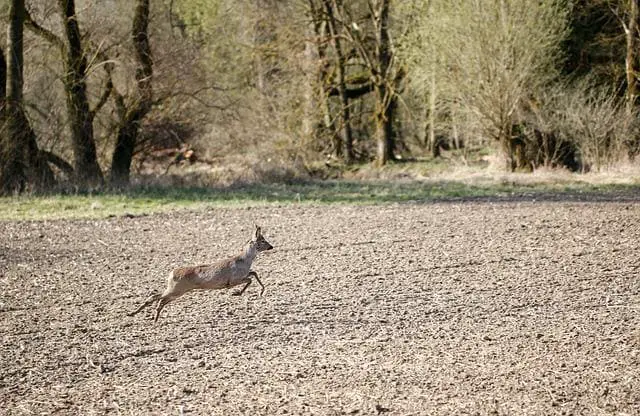If you’ve recently taken a hunting trip, you’ve probably wondered, “Will deer come back after being shot at?” Several factors can influence whether or not a deer will return. Lung-shot deer always run before they die, so you should be able to spot them by their tracks and location of sound. In this article, we’ll discuss the specific signs to look for to help you get a clearer picture of the situation.
Whitetail deer will return to their bedding area
One of the best ways to get a better shot at a whitetail deer is to know how long they stay in their bedding area. Whitetail deer spend four to six hours in their bedding area during daylight hours, and they feed in one or more of these areas each day. From September 1 through late December, the deer will change their feeding locations every two or three weeks. As long as they are not disturbed by hunters, they will go to the same area and feed.
This means that when a hunter shoots a whitetail, they should try to wait for that particular day or time. Deer do not like surprises, and they will remember when they see a new person. If they see a hunter and decide to stay away from their bedding area, the deer will likely revert back to that behavior. However, it could take an hour or more before the deer will return to their bedding area.
Tracks will come back
Animals don’t always run straight, so the tracks they leave behind will come back. You’ll need more than just blood signs to trace animal activity. Tracks can be misleading if they’re just an hour old. You’ll also need to look for blood that flows down a leg or through bushes. A few key techniques are listed below. Here’s how to use them for successful tracking.
First, wait for half an hour to an hour after shooting to start tracking the deer. During that time, go to the spot where the shot took place and check for blood. Blood may be visible at the beginning of the tracking process, but it may also be covered by the animal’s body fluids. A deer’s chest cavity may also fill with blood, which takes time to spill out. It’s imperative to keep these steps in mind.
Lung-shot deer will always run before they die
Although the blood trail is less with a lung-shot, it should still be evident, at least in the early part of the deer’s life. Although the blood trail is not immediate, the deer will run between 20 and 100 yards before it drops to the ground and die. A deer with a lung-shot will often run for a day before bedding down, whereas a deer with a single lung-shot will die within 20 to 40 yards.
One of the most important steps in stalking a deer is to know how to tell if the animal is dead. Deer will often react to a bullet through the chest or heart with a quick buck and a high-pitched yelp. While a deer with a lung-shot will hunch up and jump, a deer with a heart-lung shot will usually jump and kick its hind legs high.
Location of sounds they make
Sound clues that can help you identify where a deer has been shot can be in the deer’s behavior. While a broadside shot will cause a deer to leap high and bolt, a heart-lung shot will cause it to lurch and sprint away. Bullet strikes, heard right after the rifle report, can make a “thwack” sound. When the deer tries to run away, branches may break and the carcass will crash into the brush.
Another warning signal that deer give after being shot at is a snort. A buck makes this sound to show that he is in charge, and louder sounds indicate a stronger buck. The noise also means that they’re about to engage in a fight. A muntjac species will bark loudly in the dark to warn other deer about danger. A deer snort sound can be very disheartening, and can be used to your advantage in a hunting situation.
Time it takes for them to return
The average deer is less than a minute away from returning after being shot, but this doesn’t always happen. Even when a deer is shot in the head, it will generally take several minutes or hours before it is able to return. This is due in part to adrenaline and survival instincts. Even though deer are usually able to circle back to where they were shot, the extra distance can mean the difference between a recovered deer and a lost one.
A good rule of thumb is 30 minutes after a deer has been shot. Double-lung shots and heart shots will kill the deer immediately, but the best rule of thumb is to wait an hour. A deer will most likely run several hundred yards, so waiting for a few minutes may help. However, this does not mean that you shouldn’t pursue the deer if you get within thirty minutes.


